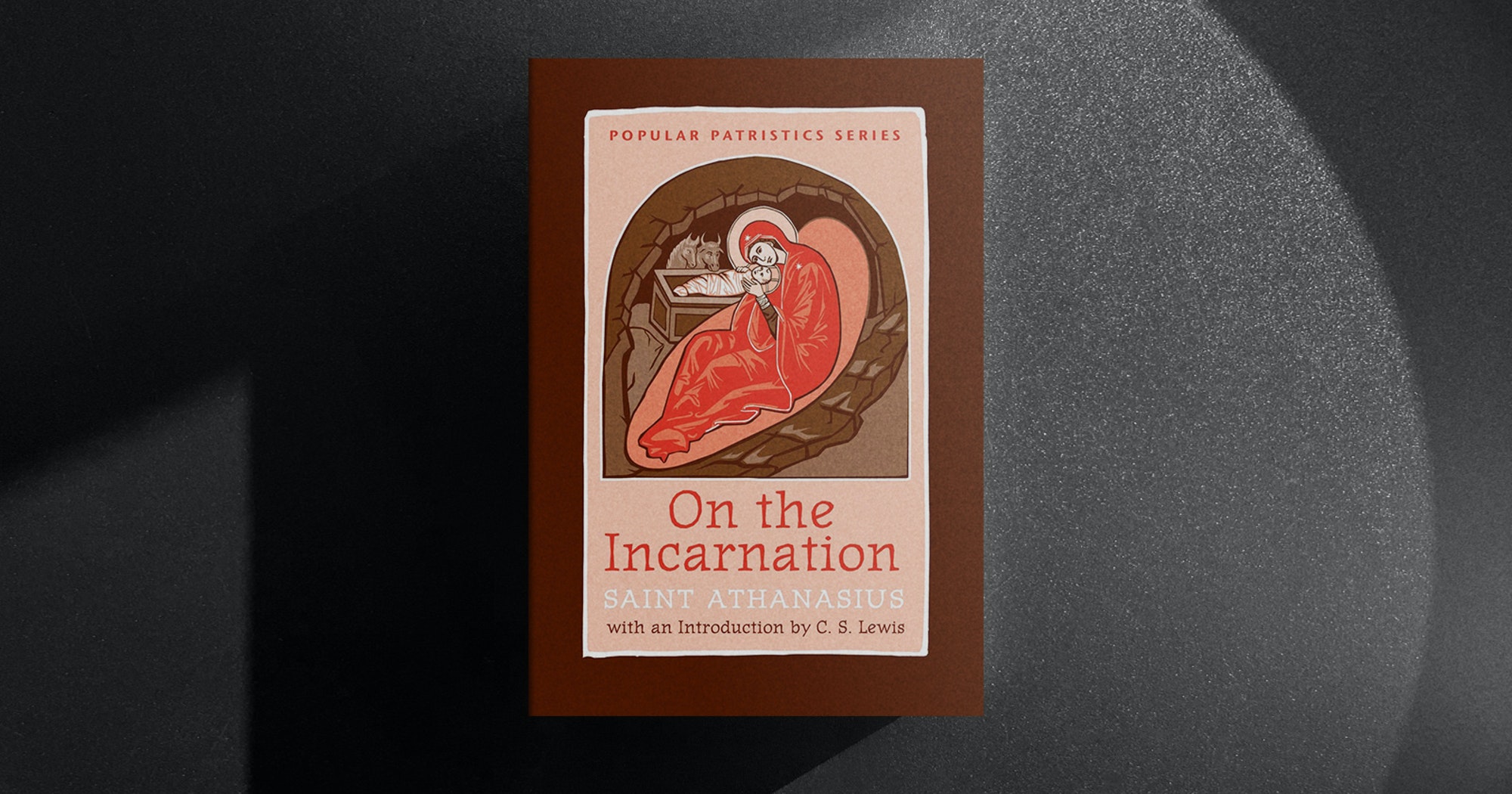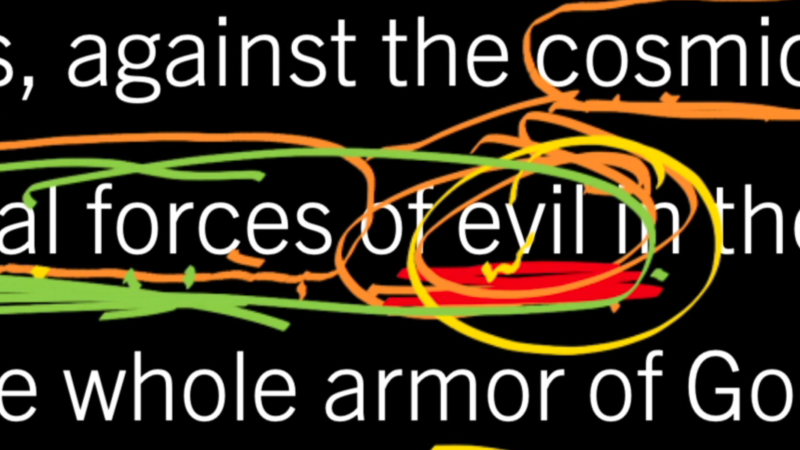http://rss.desiringgod.org/link/10732/15046209/on-the-incarnation

Athanasius of Alexandria (died AD 373) was a larger-than-life figure living in a momentous century. During his time, Constantine came to power and legalized Christianity, rapidly changing the fortunes of the church within the Roman Empire. Constantine was also responsible for convoking the first Council of Nicaea in AD 325. If granting Christianity licit status sparked the public institutional growth of the church over the next decades, the Nicene Creed sparked a flood of theological discourse that soon engulfed the century.
Athanasius was present at the Council as secretary to the bishop of Alexandria. Three years later, he was elected bishop himself, becoming one of the most important — and controversial — ecclesiastical and theological leaders of the fourth century.
Against the World
Ecclesiastically, Athanasius was famously exiled five times from his episcopal see. Theologically, he sharpened his rhetorical swords against Arians (see especially his Orations Against the Arians, written between 339–343), who denied the full equality of the Son with the Father, and later Pneumatomachians (“Spirit fighters”; see his Letters to Serapion, written ca. 357), who denied the full equality of the Spirit with the Son and the Father. Athanasius’s thick ecclesiastical skin, as well as his unrelenting courage in opposing theology that did not properly honor the Son or the Spirit as God, earned him the moniker “Athanasius contra mundum” (Latin for “against the world”).
But before there was Athanasius contra mundum, there was the Athanasius who wrote On the Incarnation. On the Incarnation was the second part of a twofold work (the first part is titled Against the Greeks), likely penned soon after he became bishop of Alexandria (ca. 328–335). The book does not possess the polemical tone of his later works, nor the obvious theological targets (Arius is not mentioned, for example). It is, rather, a straightforward yet elegant theological meditation on the divine Word made flesh.
Toward the end of the work, Athanasius makes his purpose clear: to provide “an elementary instruction and an outline of the faith in Christ and his divine manifestation to us” (56). It is the kind of work a new pastor might pen in order to orient and encourage his people in matters of first importance.
Redemption in Four Pairs
Athanasius’s teaching in On the Incarnation contains several pairs that he often plays off one another in a fruitful dialectic. Consider four of these pairs, the first being Creator-creation.
Creator-Creation
On the Incarnation begins by reasserting the power of God in creation. This creative power is an ingredient in sanctified logic that, for Athanasius, moves inexorably to God’s work in salvation through the incarnation of the Son of God. In other words, redemption through the Word flows logically from his prior relation to the creature in the work of creation. When the Word became incarnate for the salvation of his people, he did not do so from an inherent necessity in his nature, but neither did he act arbitrarily. No, Athanasius reasoned, since the Word fashioned the world, it was not “inconsonant” for God to bring salvation to the world through the same One with whom he fashioned it (1).
Goodness-Grace
As Athanasius follows the biblical narrative out of the first two chapters of Genesis, he treats the fall. The corruption of death enters the world through humanity disobeying God’s law in the garden. As a result, death gains a legal hold over humanity, and wickedness spreads as the clarity of the image of God is lost. As Athanasius gets to this low point, however, he turns to the goodness of God and its inherent logic: God is a good God, and he has instilled goodness in his creation. While absolutely distinct from his creation, God is positively postured toward his handiwork, especially toward humanity, whom he made in his image for a blessed relationship with him. It would be unseemly, then, to let all of humanity slip into absolute corruption.
For Athanasius, God’s power and goodness compel him not to leave humanity in ruin — his power because to do nothing to rescue his good creation would show weakness, and his goodness because it would be improper to leave all humanity wallowing in ruin when he has the power to do something about it. But how will God help humanity’s plight in line with his justice? Athanasius considers mere human repentance as an option, but shows it to be insufficient since it does not “recall human beings from what is natural, but merely halts sins” (7). The gravity of the situation calls for the Creator, the Word of God, to be the “re-Creator,” who is sufficient to suffer on behalf of all since he made all. It was the goodness of God that compelled him to do so. In other words, God’s goodness stands behind his grace.
image–The Image
As Athanasius turns to the work of Christ in On the Incarnation, he brings particular attention to his reversal of the loss of the image of God. Humanity has continually rejected divine resources, leaving it bereft of the knowledge of God. It has rejected revelation in nature, and it has rejected revelation in word through the Jewish Law and Prophets. This loss is especially seen in the darkening of the prime location for human knowledge of God: the image within. Again, Athanasius asks, was God to leave humanity in this state?
“Seeing that humans lowered their eyes from the divine and wallowed in their senses, the divine took on flesh.”
By sending to his creation the actual Image in which humans were created, God renewed the part of humans by which we can know God. Seeing that humans lowered their eyes from the divine and wallowed in their senses, the divine took on flesh, according to Athanasius, in order to “return their sense perception to himself” (16). By this the Word brings the knowledge of God, making it accessible through the renewed image, which perceives the invisible God by means of the visible works of the incarnate God.
Corruptibility-Incorruptibility
The final and culminating pair from On the Incarnation is corruptibility-incorruptibility, which Athanasius considers from the moment of Christ’s incarnation to his resurrection. The basic structure of this pair is given a directional cast: the incorruptible Word came down and entered the corruptibility of creation in order to turn humanity from its corruption back up to God. Through taking on a body with the incorruptible Word, corruption can be reversed in humanity. But a debt must also be repaid, and this can be done only by the death of Jesus Christ and the “grace of the resurrection” (9).
“Through taking on a body with the incorruptible Word, corruption can be reversed in humanity.”
Death and resurrection reveal the real power of the corruptibility-incorruptibility pair. The death of Jesus Christ paid the debt for the ultimate end of corruptibility — death — and finally released humanity from its curse. The resurrection of Jesus Christ shows victory over death and is a witness to the incorruptibility available to all.
Athanasius puts this directionality memorably in a famous line: “He was incarnate that we might become god” (54). He does not mean that human beings lose their nature and transgress the Creator-creature divide. He has invested too much in the Creator-creature distinction for that to be true! Rather, he means that if we have faith in the one who conquered death, we gain his incorruptibility, delivered in eternal life. We gain by grace what the Son has by nature, which releases resurrection power into the believer’s life. Indeed, as Athanasius closes On the Incarnation, he points to changed lives and a changed world as blessed evidence of the truth of the incarnation.
What the Son Must Be
Thousands of writers in the history of the church have touched on the incarnation. That subject matter alone is not what has made On the Incarnation a Christian classic. Its enduring quality stems from the lucid logic Athanasius applies to one of the central mysteries of our faith. Athanasius simultaneously upholds the utter mysteriousness of God and his ways with the world and their inescapable reasonableness. The coherence of Athanasius’s thought is owing to this reasonableness, which shines through from creation to re-creation, from God’s goodness to his grace, from the loss of the image of God to its restoration in the Image, and from the corruptible made incorruptible. The whole work possesses a bracing unity, leading C.S. Lewis to call it a “masterpiece.”
While modern theology often breaks apart the doctrines of God and salvation, Athanasius treats them as a unified whole. In later works, he gives direct attention to the divine status of the Son, but in On the Incarnation the status of the Son is often entailed in what he is able to do. If the Word creates, and the Word re-creates, then the Word does what only God can do. A Son who can take what is corruptible and unite it to the incorruptible is a Son who is himself incorruptibly divine.
While On the Incarnation is edifying devotional reading, it is also a wonderful introduction to classical Trinitarian theology that developed and took shape in the fourth century. For the believing church, Trinitarian theology has never been concerned with merely the status of the Son or the Holy Spirit. It has been concerned with what must be true if Christian worship is to have integrity, and what must be true if our salvation is to be anchored in heaven. By tethering our salvation to the incarnate Son who has risen and ascended to the right hand of the Father, Athanasius firmly anchors our greatest hopes in God himself.



